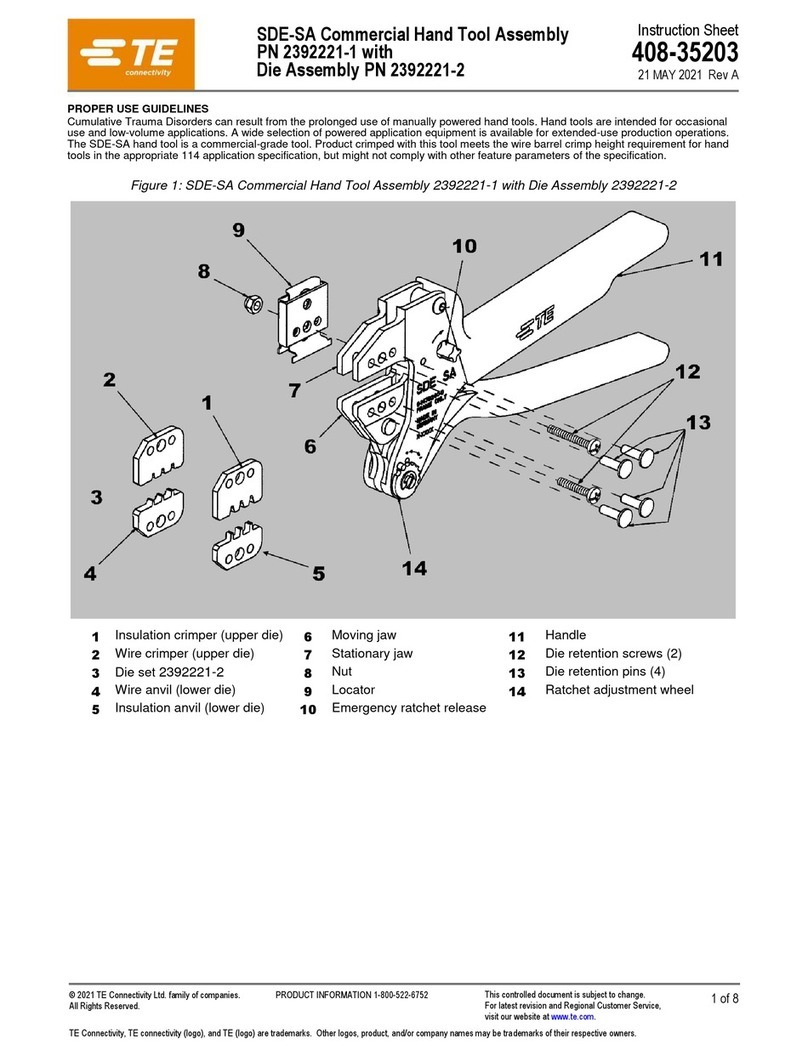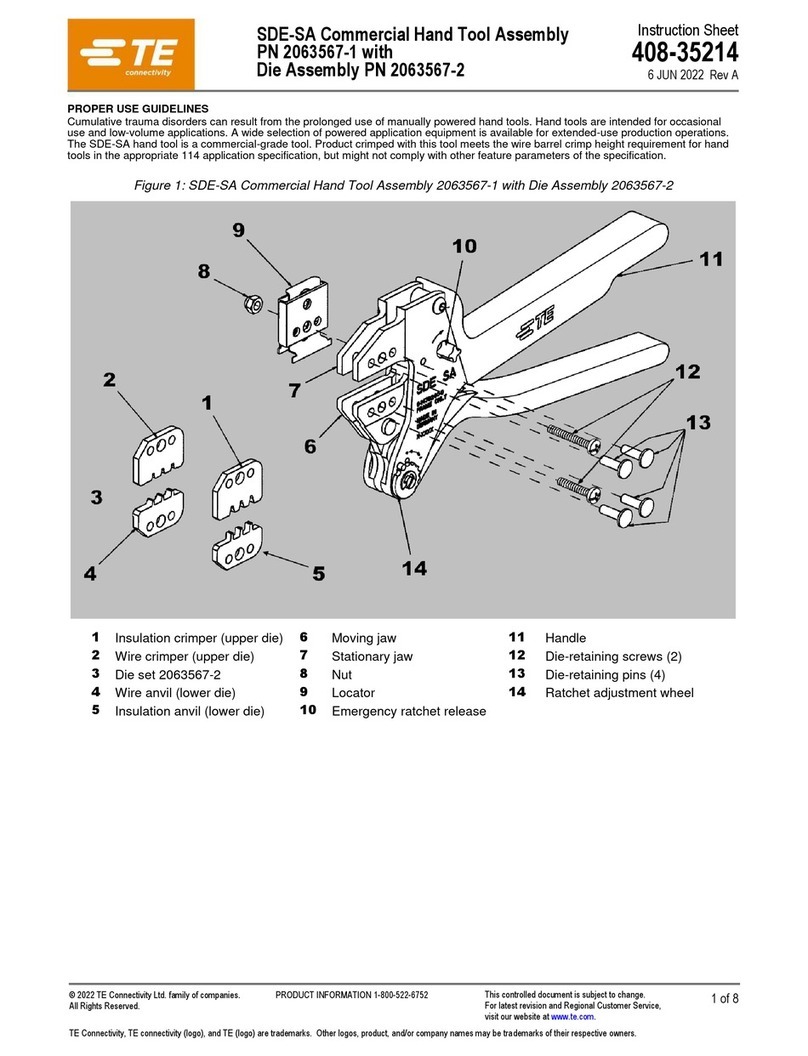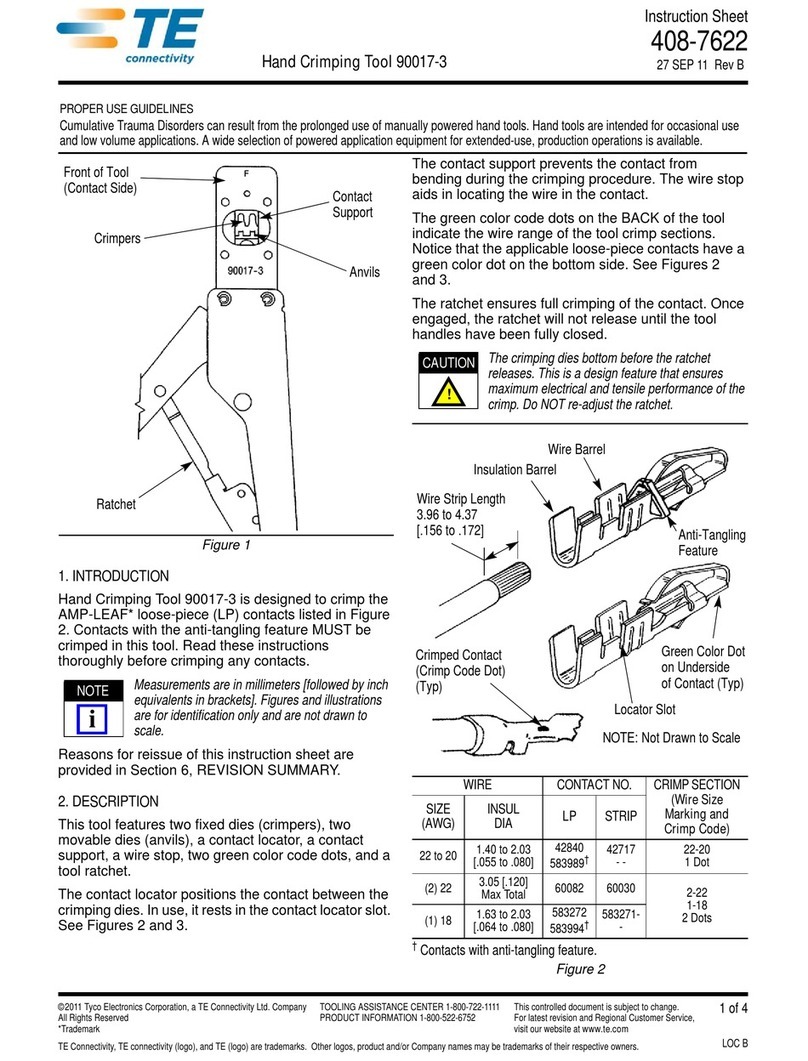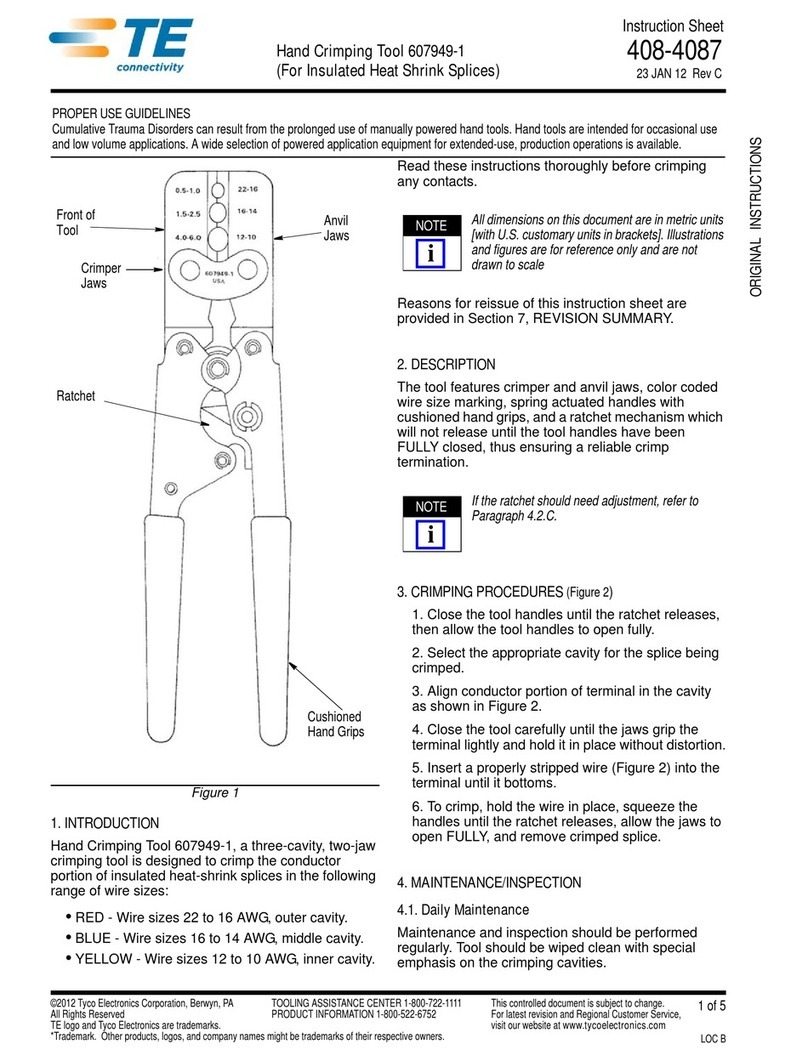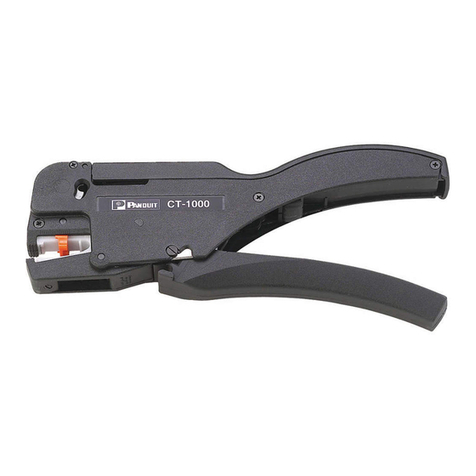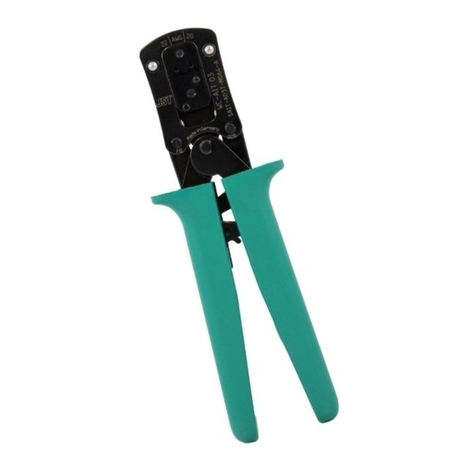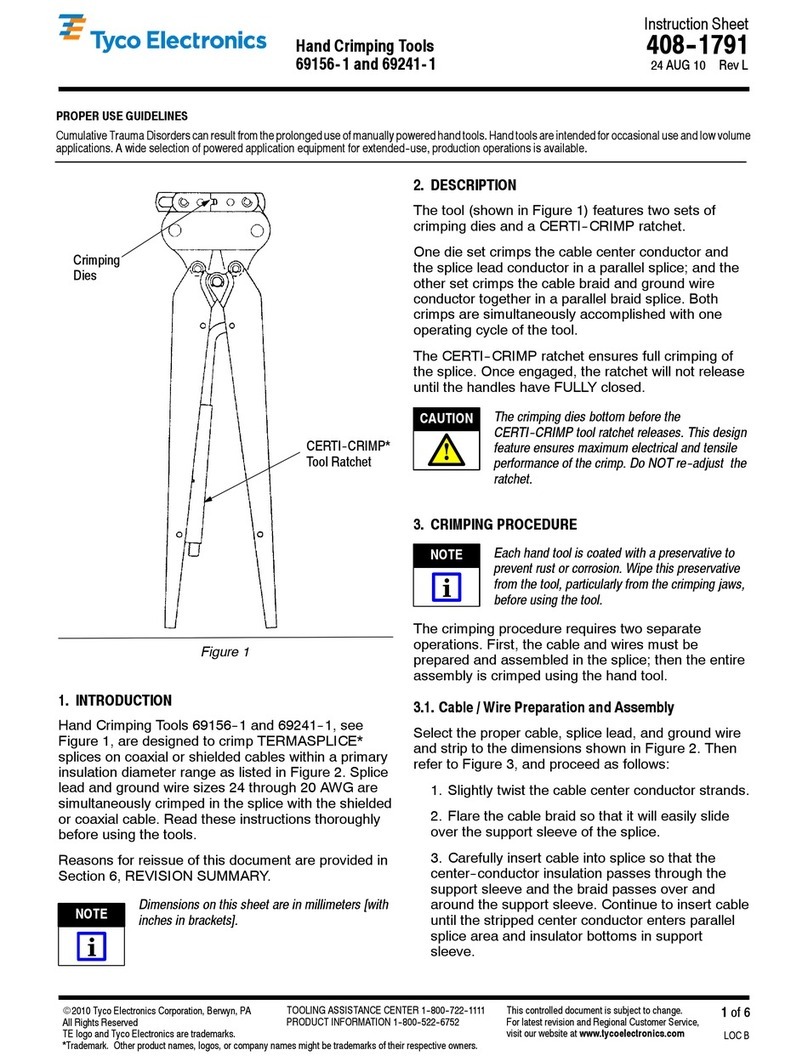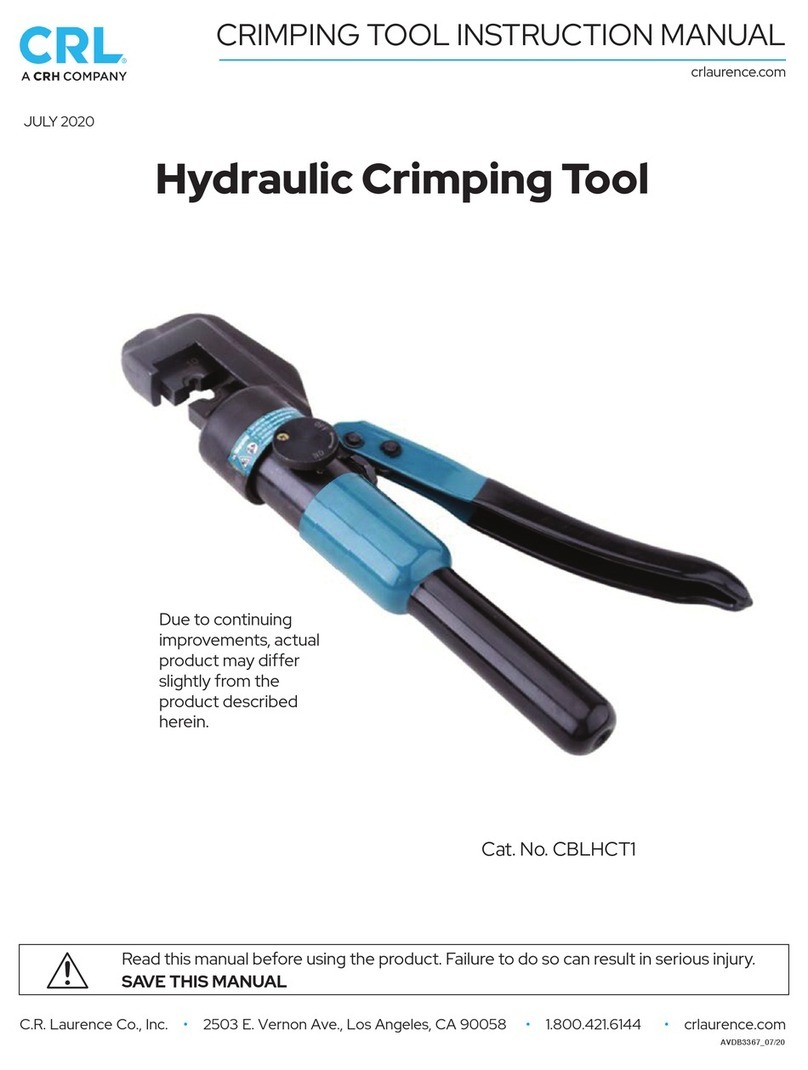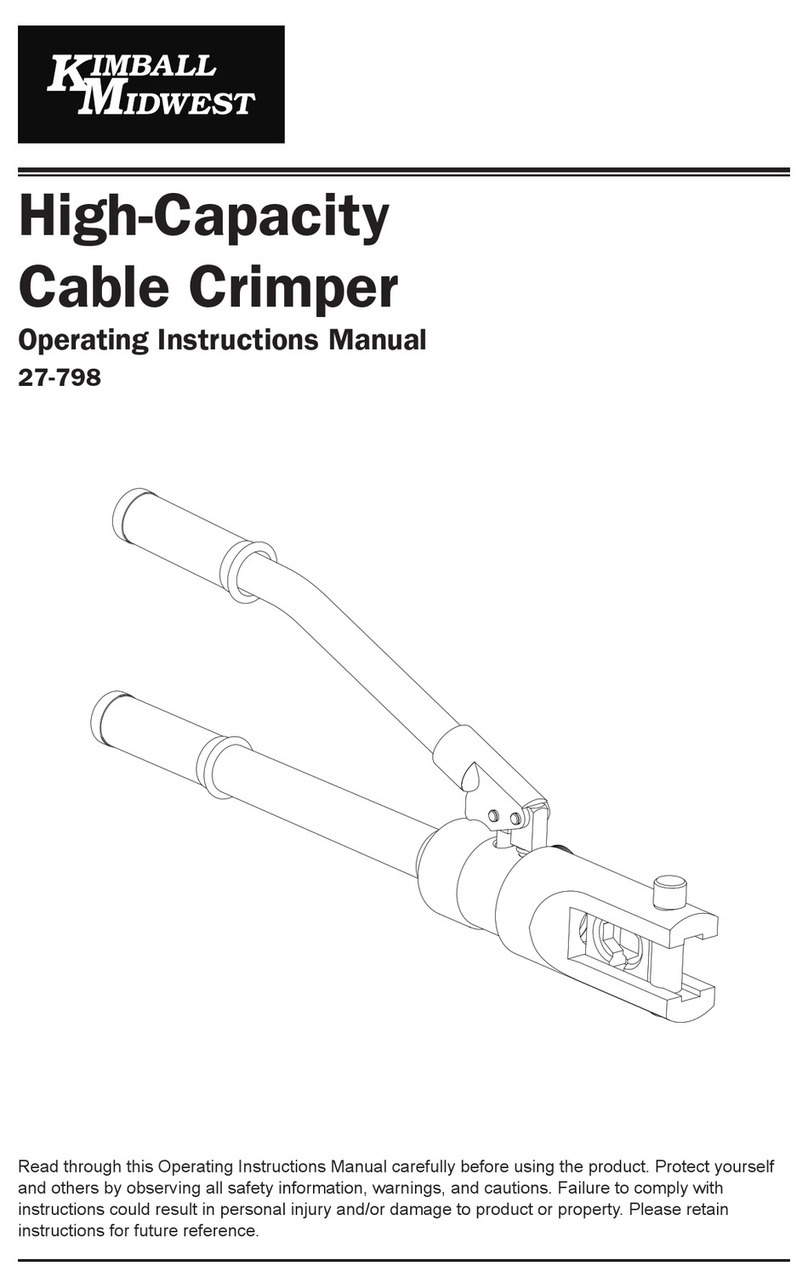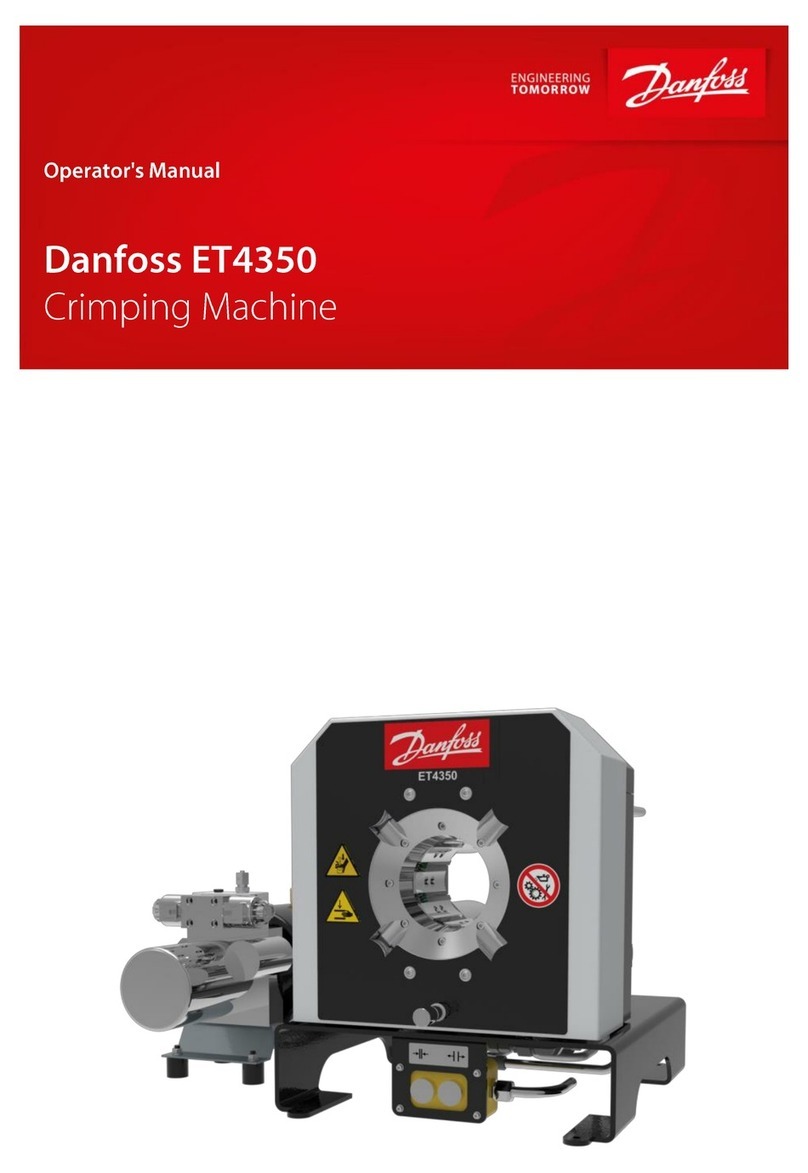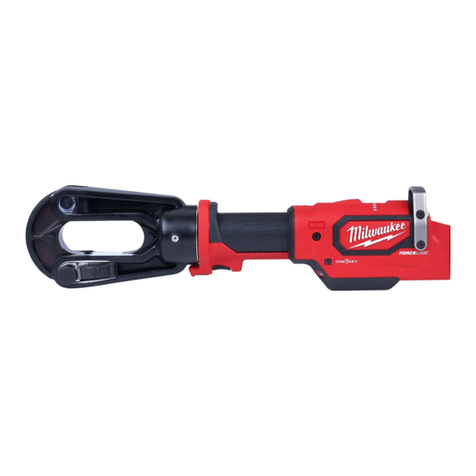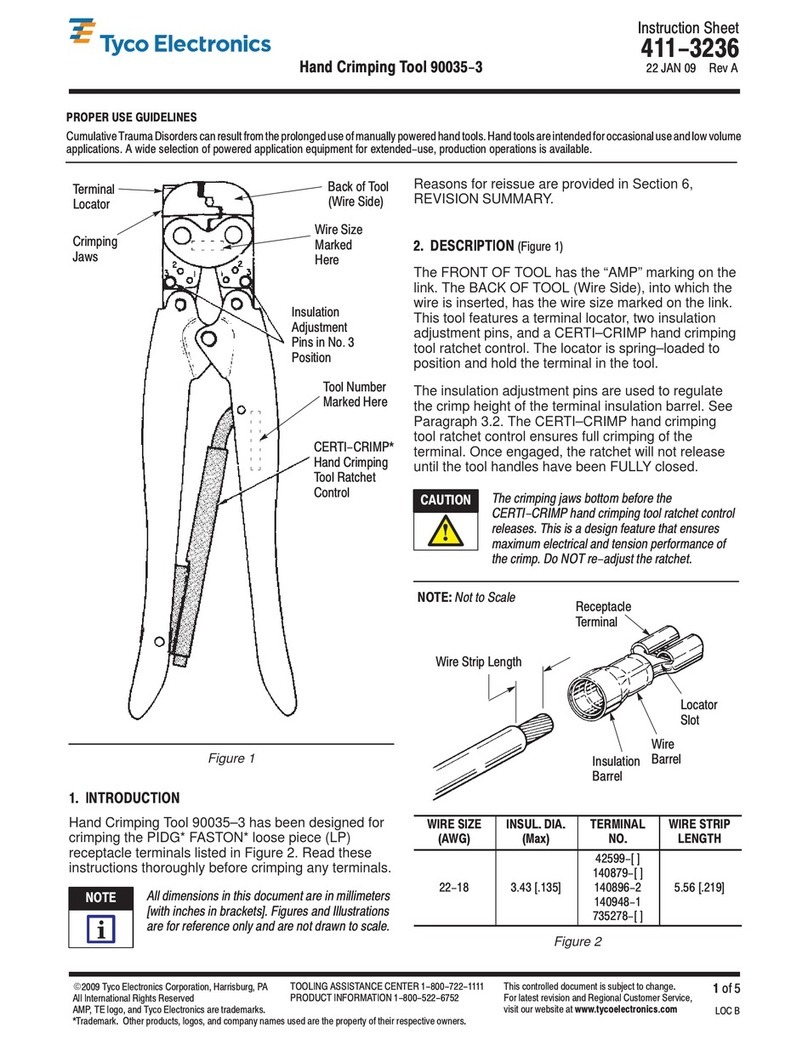TE Connectivity SDE-SA 2379968-1 User manual
Other TE Connectivity Crimping Tools manuals

TE Connectivity
TE Connectivity PRO-CRIMPER III User manual
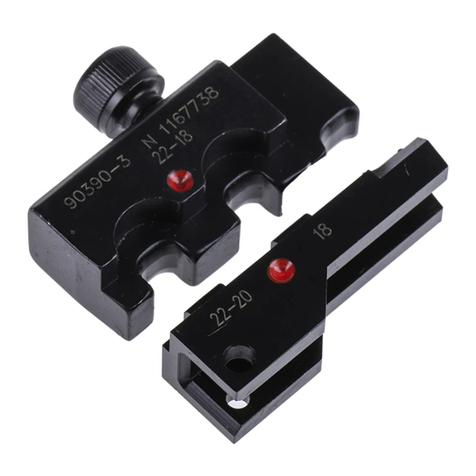
TE Connectivity
TE Connectivity Faston Series User manual
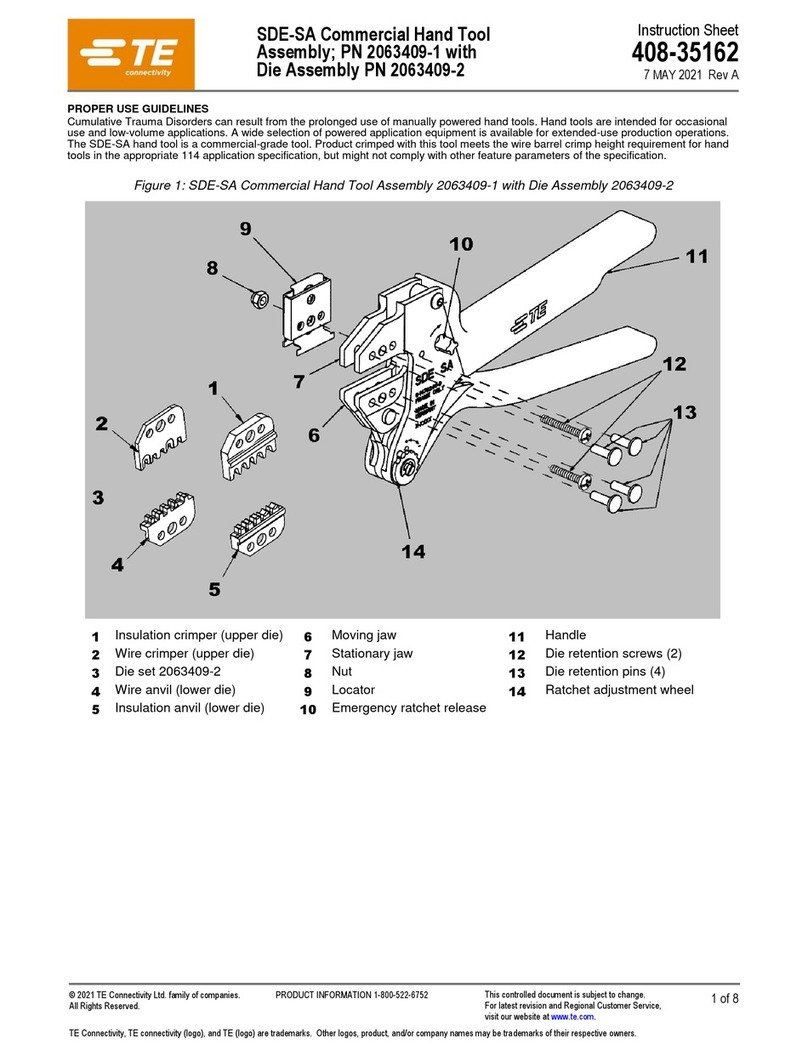
TE Connectivity
TE Connectivity 2063409-1 User manual
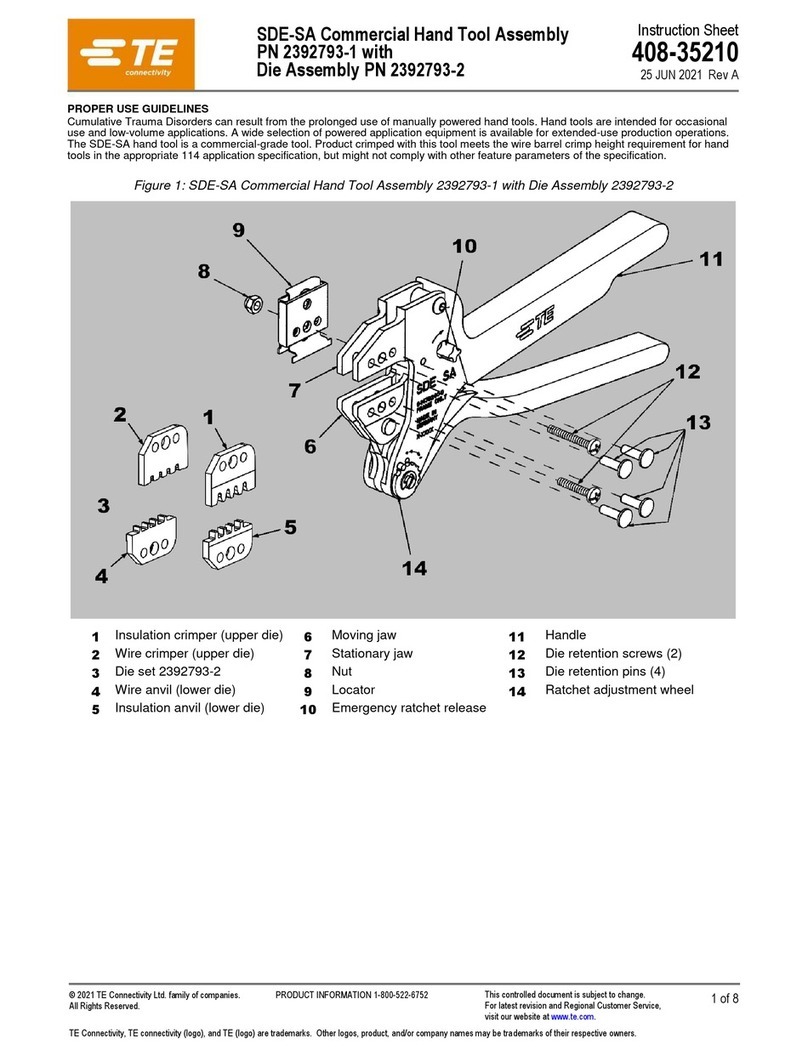
TE Connectivity
TE Connectivity SDE-SA User manual
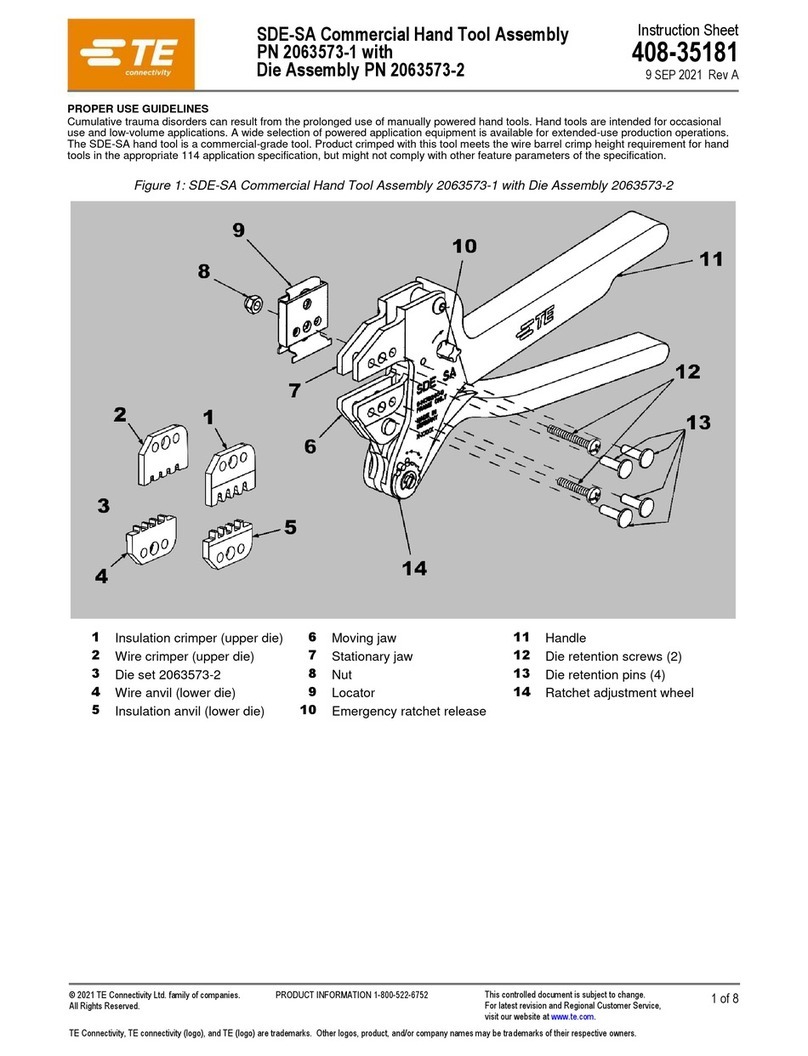
TE Connectivity
TE Connectivity 2063573-1 User manual
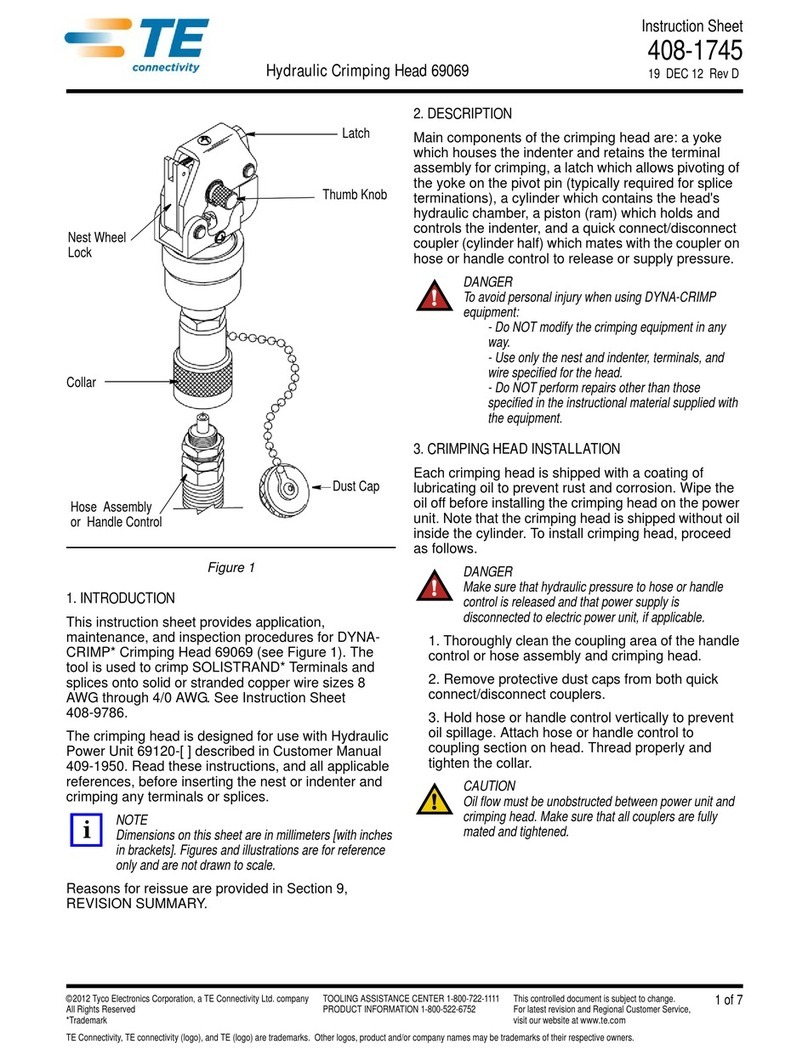
TE Connectivity
TE Connectivity 69069 User manual
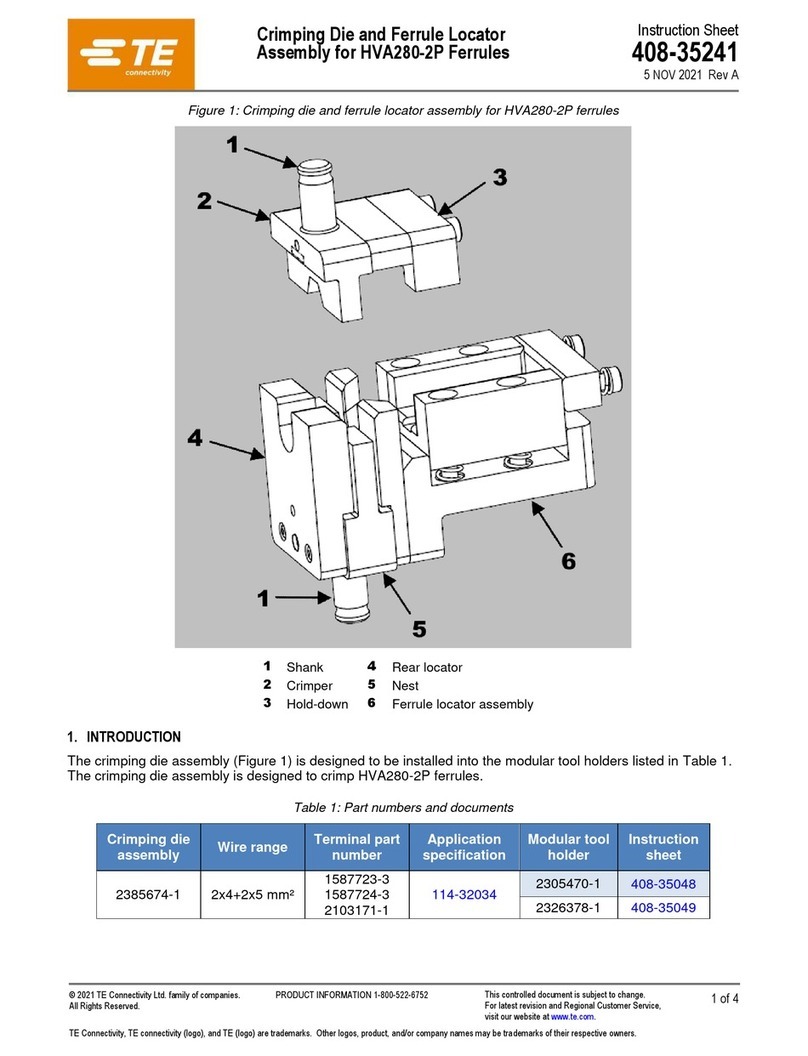
TE Connectivity
TE Connectivity HVA280-2P User manual
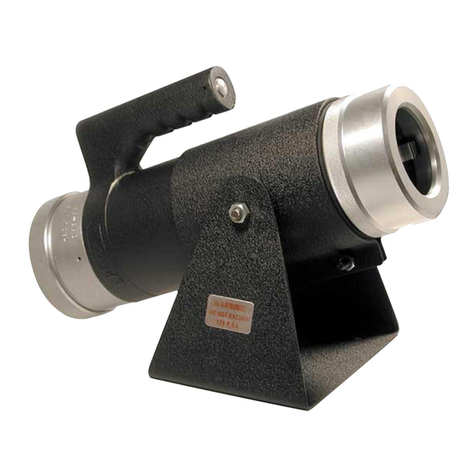
TE Connectivity
TE Connectivity HDP-400 Reference guide
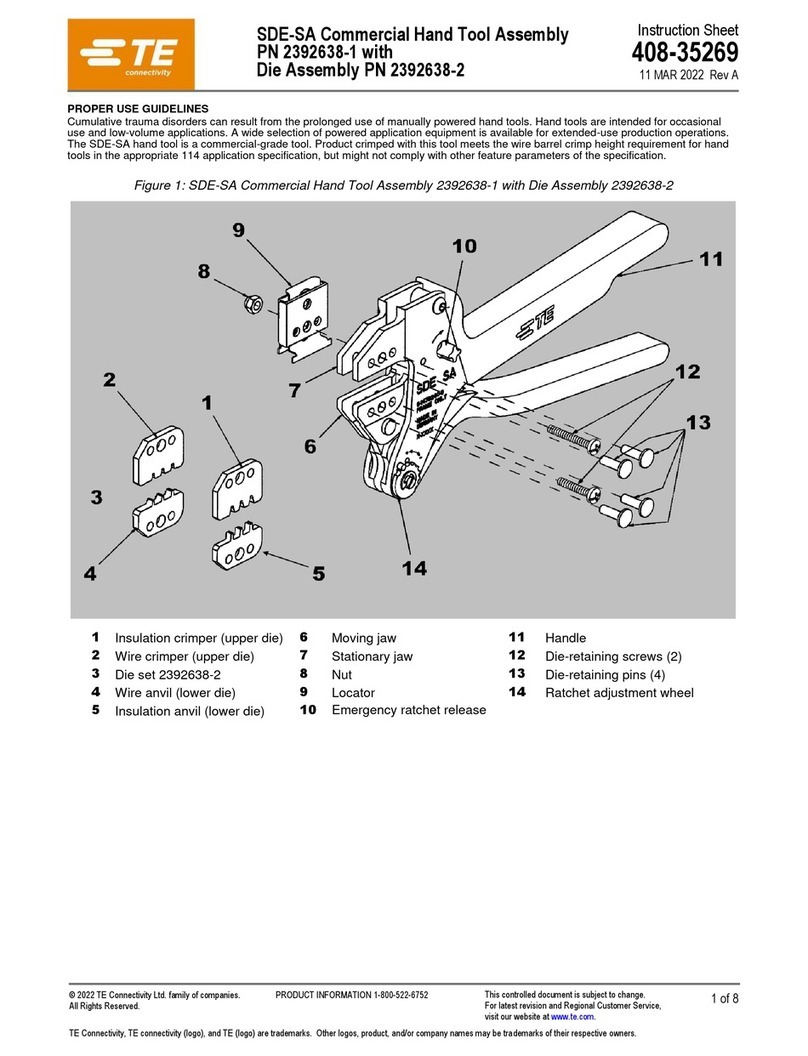
TE Connectivity
TE Connectivity SDE-SA User manual
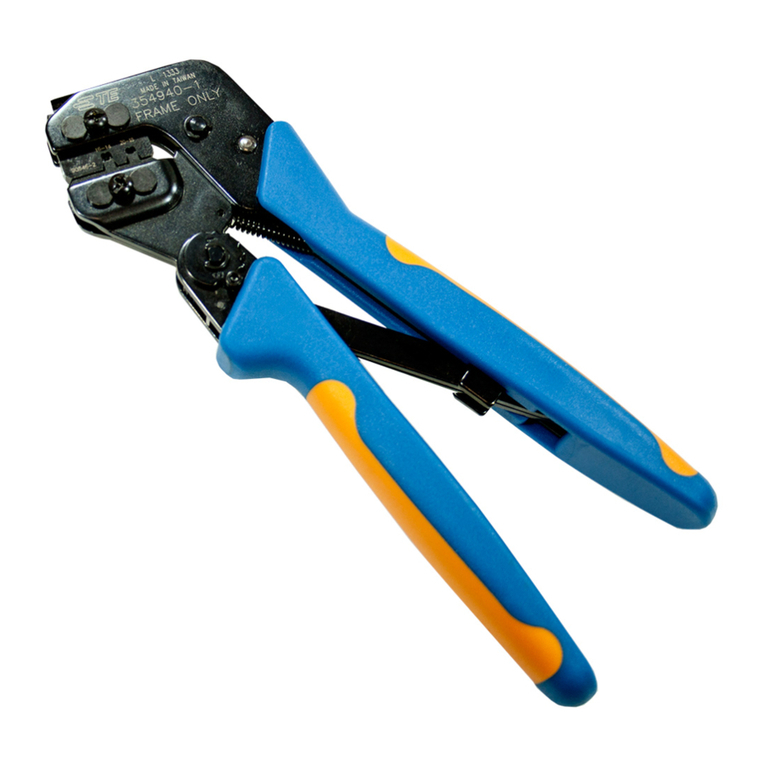
TE Connectivity
TE Connectivity PRO-CRIMPER III User manual
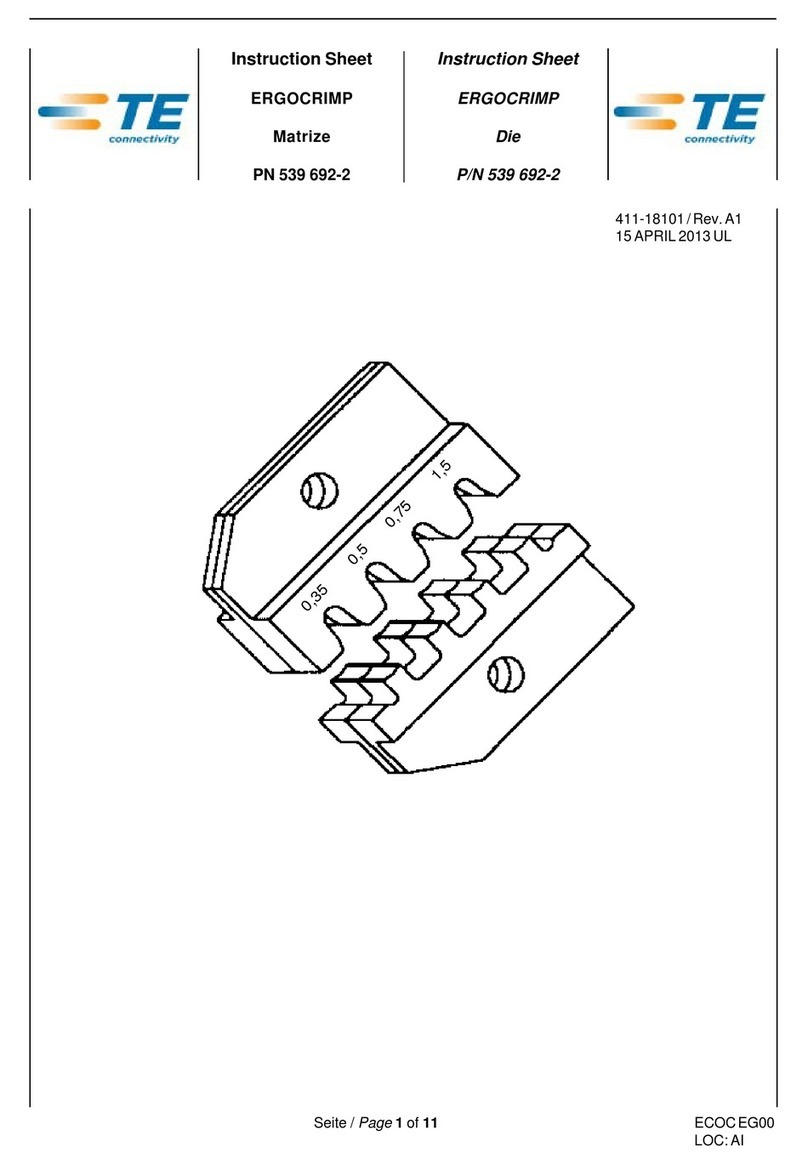
TE Connectivity
TE Connectivity ERGOCRIMP 539 692-2 User manual
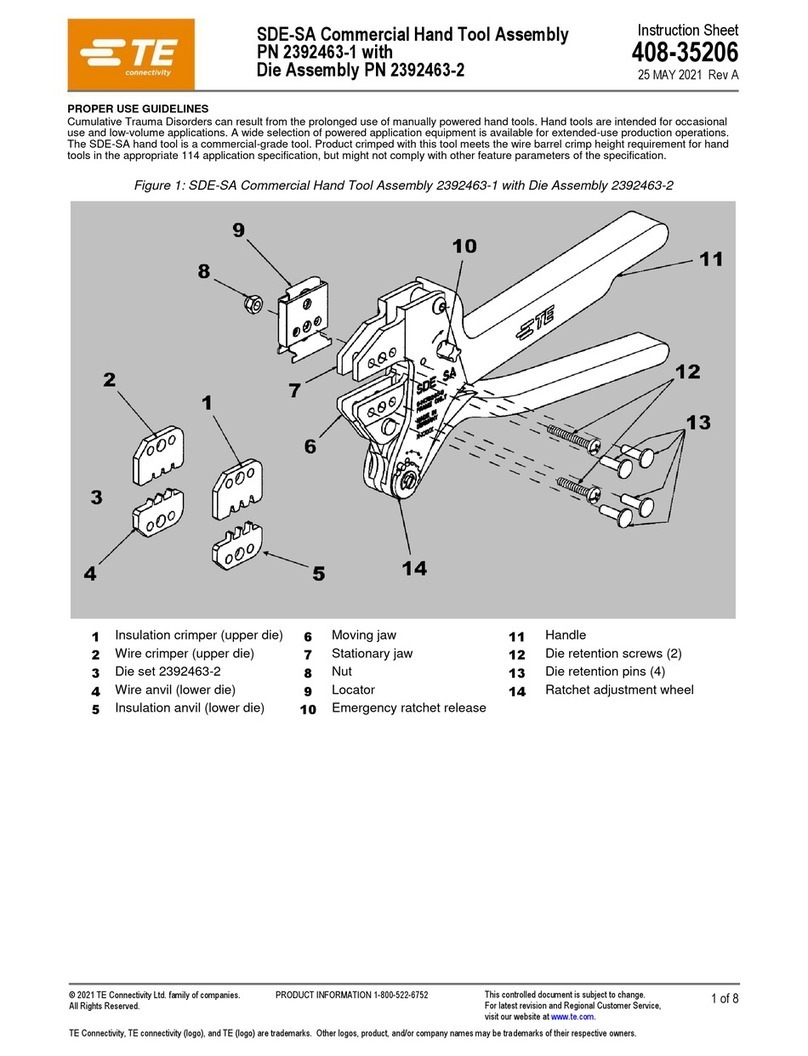
TE Connectivity
TE Connectivity SDE-SA User manual

TE Connectivity
TE Connectivity PRO-CRIMPER III User manual
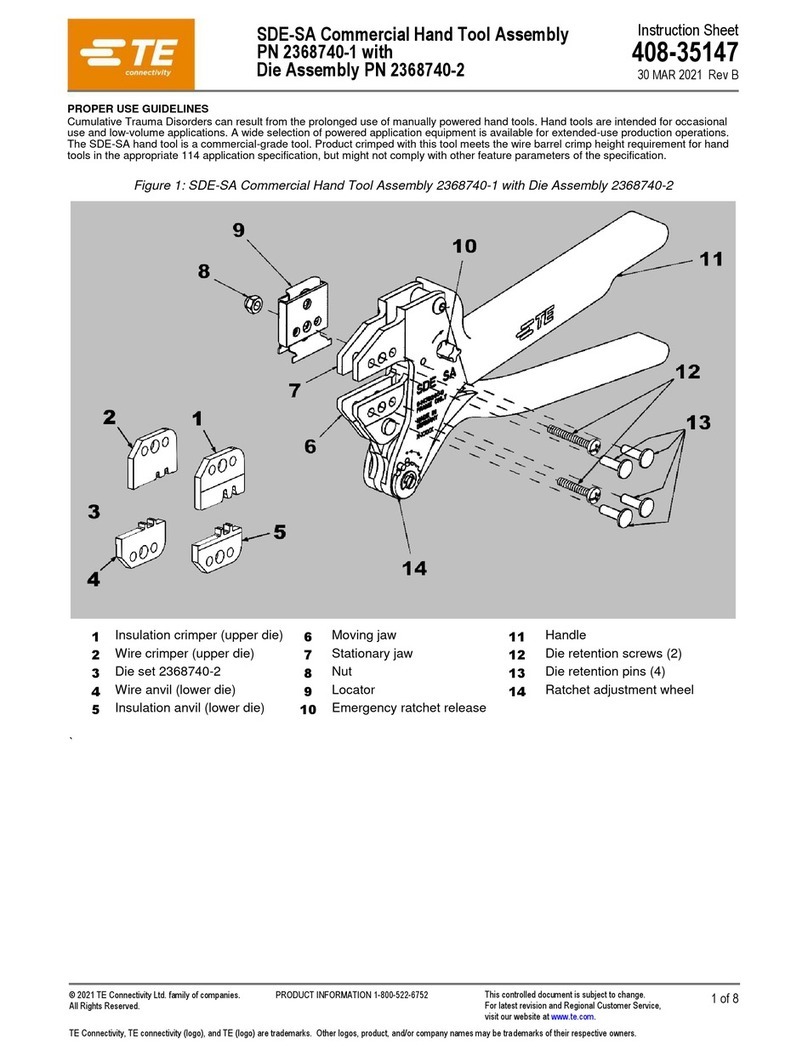
TE Connectivity
TE Connectivity 2368740-1 User manual
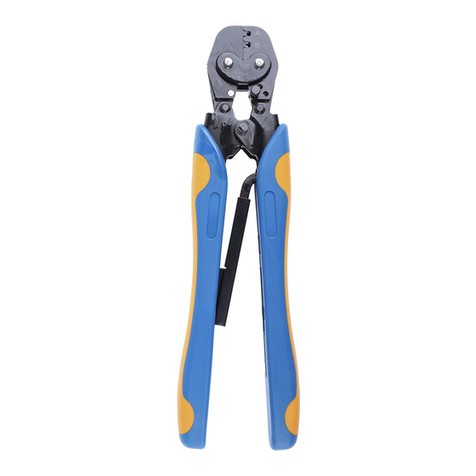
TE Connectivity
TE Connectivity CERTI-CRIMP User manual

TE Connectivity
TE Connectivity PRO-CRIMPER III User manual

TE Connectivity
TE Connectivity AMP 5k/40 CE User manual

TE Connectivity
TE Connectivity 220015 Series User manual
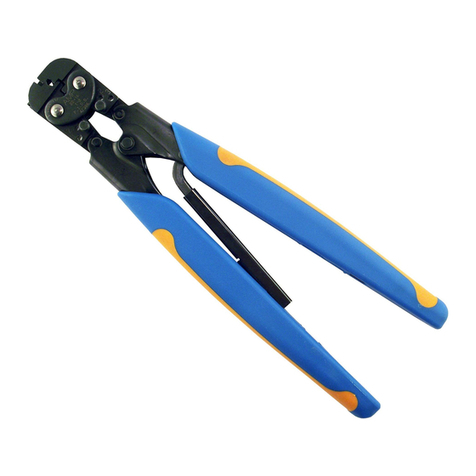
TE Connectivity
TE Connectivity CERTI-CRIMP 90165-1 User manual
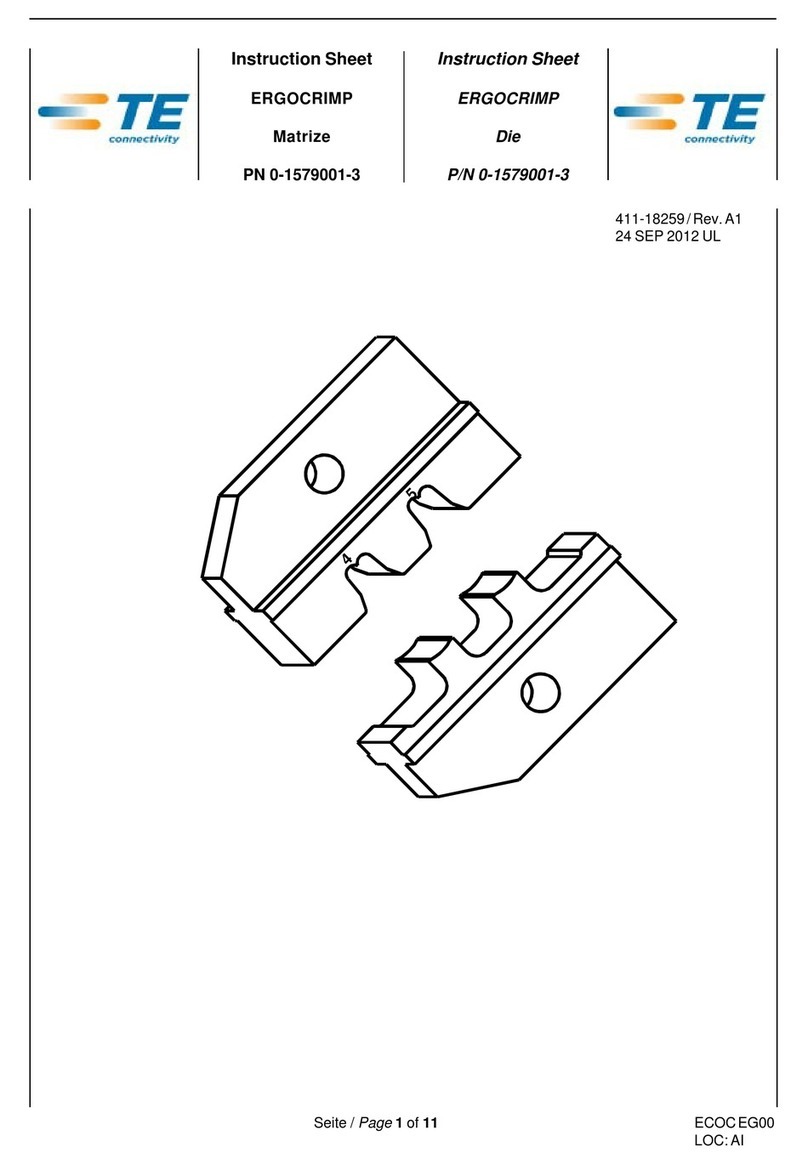
TE Connectivity
TE Connectivity ERGOCRIMP 0-1579001-3 User manual
Popular Crimping Tools manuals by other brands
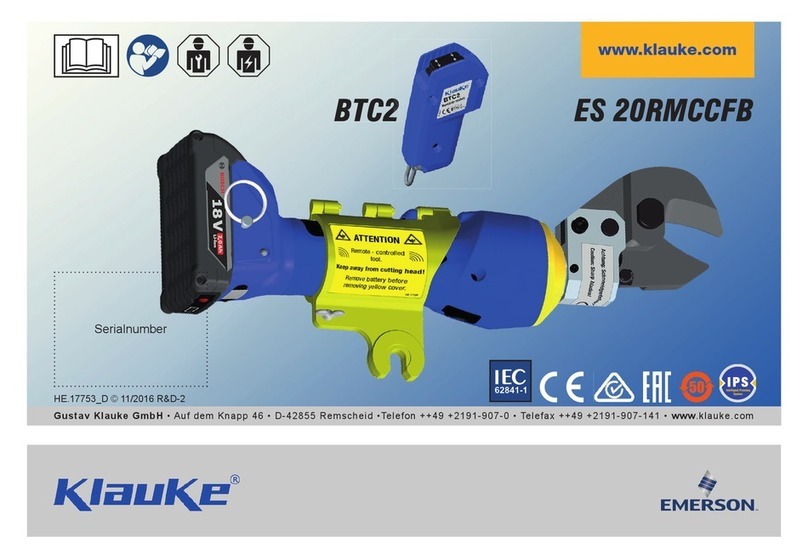
Emerson
Emerson Klauke ES 20RMCCFB manual

Continental Refrigerator
Continental Refrigerator PC150HD quick start guide
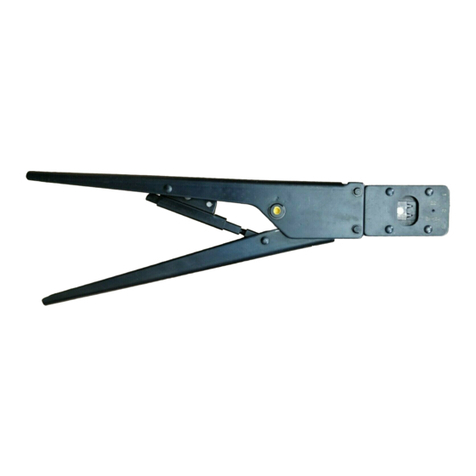
Tyco Electronics
Tyco Electronics CERTI-CRIMP 90418-1 instruction sheet
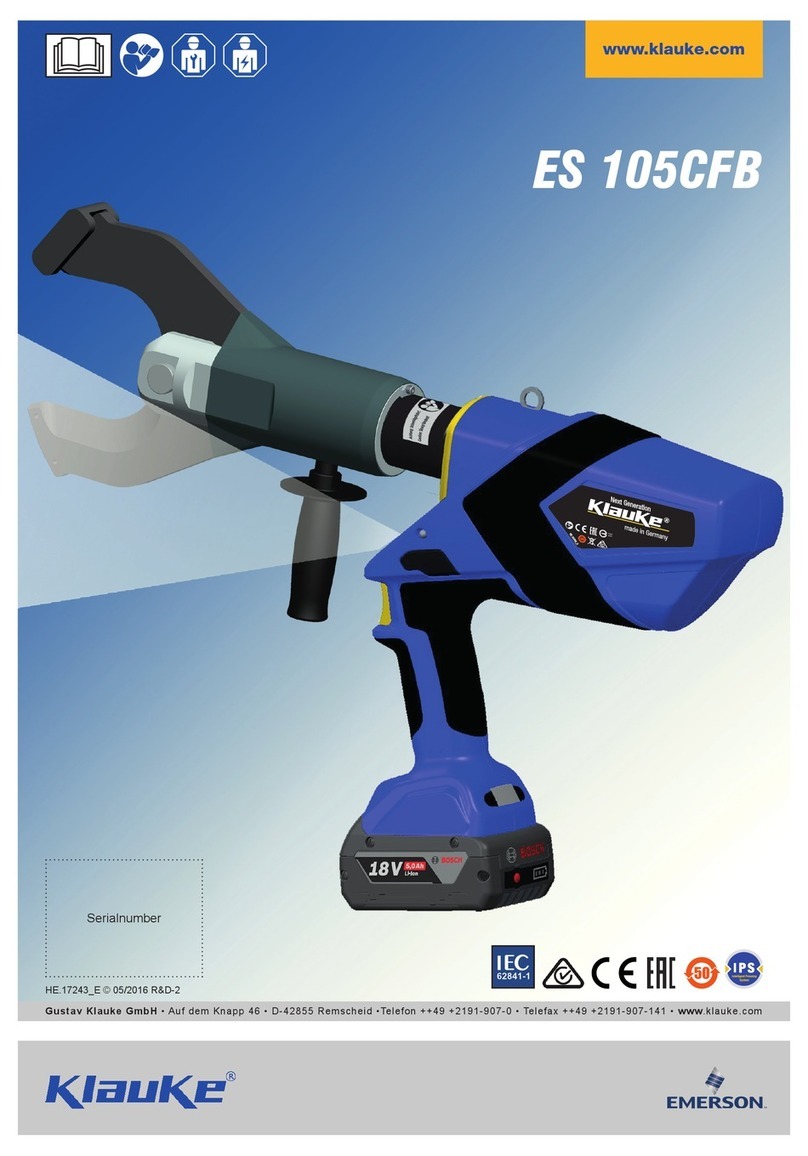
Emerson
Emerson Klauke ES 105CFB manual

molex
molex 207129 Series Specification sheet

molex
molex 207129 Series Specification sheet
